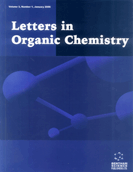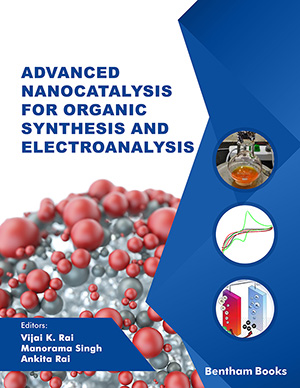Abstract
A pinacol rearrangement is a well-known reaction by which a 1,2-diol is converted to a carbonyl compound through acid-catalyzed dehydration followed by a 1,2-migration of one of the neighboring substituents. Due to the particular abilities in installing polycyclic skeletons, quaternary carbon centers, and spirocyclic cores, the pinacol rearrangement reaction is a powerful and effective means of forming carbonyl functional groups in a variety of different molecules. Moreover, the substrates with an alkene group, a furan ring or alkyl chain tethered between the two diols have also been investigated as the expansion of pinacol rearrangement. Benefiting from the continuous development of the catalysis methodologies, pinacol rearrangements demonstrate synthetic utility in the preparation of natural products, bioactive molecules, and other functionally useful compounds. In this review, we discuss recent advances in the development of pinacol rearrangement and extended pinacol rearrangement reactions catalyzed by Brønsted acid, Lewis acid, and heterogeneous catalysts. In addition, we summarize several examples use pinacol rearrangements used in the synthesis of natural products and other valuable molecules.
Keywords: Pinacol rearrangement, brønsted acid, lewis acid, solid-heterogeneous catalysts, valuable molecule synthesis, bioactive molecules.
[http://dx.doi.org/10.1002/jlac.18601140107]
[http://dx.doi.org/10.1016/B978-0-08-052349-1.00078-0]
[http://dx.doi.org/10.1002/anie.200290007] [PMID: 12481317]
[http://dx.doi.org/10.1021/ja00073a029]
[http://dx.doi.org/10.1016/S0040-4039(00)94384-3]
[http://dx.doi.org/10.1246/cl.1982.1537]
[http://dx.doi.org/10.1021/jo0100143] [PMID: 11375017]
[http://dx.doi.org/10.1016/S0040-4039(02)01626-X]
[http://dx.doi.org/10.1016/S0040-4039(02)02379-1]
[http://dx.doi.org/10.1002/hlca.19720550810]
[http://dx.doi.org/10.1021/jo201688c] [PMID: 21955163]
[http://dx.doi.org/10.1002/hlca.201300074]
[http://dx.doi.org/10.1021/jacs.8b08127] [PMID: 30160105]
[http://dx.doi.org/10.1080/00397919808004943]
[http://dx.doi.org/10.1002/ange.201900782]
[http://dx.doi.org/10.1016/S0040-4039(00)97571-3]
[http://dx.doi.org/10.1016/j.tet.2007.09.016]
[http://dx.doi.org/10.1021/jo000705j] [PMID: 11076601]
[http://dx.doi.org/10.1039/C4OB02423K] [PMID: 25602974]
[http://dx.doi.org/10.1021/acs.orglett.7b01679] [PMID: 28696127]
[http://dx.doi.org/10.1016/j.tetlet.2017.08.052]
[http://dx.doi.org/10.1039/C9OB01353A] [PMID: 31347626]
[http://dx.doi.org/10.1039/D0QO00088D]
[http://dx.doi.org/10.1016/0304-5102(93)E0220-B]
[http://dx.doi.org/10.1039/c39940001591]
[http://dx.doi.org/10.1016/S0040-4020(01)85301-1]
[http://dx.doi.org/10.1016/1381-1169(95)00225-1]
[http://dx.doi.org/10.1023/A:1019019720156]
[http://dx.doi.org/10.1002/1521-3773(20011001)40:19<3647:AID-ANIE3647>3.0.CO;2-A] [PMID: 11592209]
[http://dx.doi.org/10.1006/jcat.2001.3285]
[http://dx.doi.org/10.1016/S1381-1169(01)00382-X]
[http://dx.doi.org/10.1016/S0920-5861(01)00509-0]
[http://dx.doi.org/10.1016/S0920-5861(02)00062-7]
[http://dx.doi.org/10.1039/B205916A]
[http://dx.doi.org/10.1039/c39890000386]
[http://dx.doi.org/10.1002/adfm.200400370]
[http://dx.doi.org/10.1016/j.apcata.2006.08.039]
[http://dx.doi.org/10.1016/j.apcata.2008.01.034]
[http://dx.doi.org/10.1016/j.cattod.2012.10.021]
[http://dx.doi.org/10.9767/bcrec.9.2.6074.136-141]
[http://dx.doi.org/10.1021/ja026290w] [PMID: 12022828]
[http://dx.doi.org/10.1039/c0gc00916d]
[http://dx.doi.org/10.1002/(SICI)1521-3773(19991004)38:19<2910:AID-ANIE2910>3.0.CO;2-C] [PMID: 10540390]
[http://dx.doi.org/10.1021/ja9925251]
[http://dx.doi.org/10.1016/j.apcata.2003.09.001]
[http://dx.doi.org/10.1002/ejoc.200500324]
[http://dx.doi.org/10.1039/c2nj21038j]
[http://dx.doi.org/10.1039/p19890000209]
[http://dx.doi.org/10.1246/bcsj.71.2817]
[http://dx.doi.org/10.3390/60500442]
[http://dx.doi.org/10.5012/bkcs.2006.27.8.1246]
[http://dx.doi.org/10.1021/jo980148p] [PMID: 11672356]
[http://dx.doi.org/10.1021/jo035439z] [PMID: 15058948]
[http://dx.doi.org/10.1039/c2cc17960a] [PMID: 22388546]
[http://dx.doi.org/10.1016/0040-4020(96)00130-5]
[http://dx.doi.org/10.1039/C9GC01152H]
[http://dx.doi.org/10.1021/ja00212a017]
[http://dx.doi.org/10.1002/(SICI)1521-3773(20000303)39:5<937:AID-ANIE937>3.0.CO;2-A]
[http://dx.doi.org/10.1002/anie.200604544] [PMID: 17310486]
[http://dx.doi.org/10.1002/anie.200901628] [PMID: 19593831]
[http://dx.doi.org/10.1021/jo2015517] [PMID: 21919452]
[http://dx.doi.org/10.1021/acs.orglett.7b02989] [PMID: 29155594]
[http://dx.doi.org/10.1016/j.jcat.2020.01.012]
[http://dx.doi.org/10.1039/c2ob25384d] [PMID: 22610125]
[http://dx.doi.org/10.1246/bcsj.20170335]
[http://dx.doi.org/10.1002/ajoc.201900318]
[http://dx.doi.org/10.1002/1521-3773(20011217)40:24<4765:AID-ANIE4765>3.0.CO;2-1] [PMID: 12404411]
[http://dx.doi.org/10.1016/j.tetlet.2020.152733]
[http://dx.doi.org/10.1021/acscentsci.1c00075] [PMID: 34056086]
[http://dx.doi.org/10.1021/ja000788l]
[http://dx.doi.org/10.1002/ange.201609911]
[http://dx.doi.org/10.1016/j.tet.2018.10.022]
[http://dx.doi.org/10.1016/S0040-4020(99)00406-8]
[http://dx.doi.org/10.1021/ar200082p] [PMID: 21728380]
[http://dx.doi.org/10.1039/C3CC48547A] [PMID: 24473198]
[http://dx.doi.org/10.1039/C6CS00935B] [PMID: 28349159]
[http://dx.doi.org/10.1021/cr200055g] [PMID: 21851053]
[http://dx.doi.org/10.1002/chem.200903410] [PMID: 20391560]
[http://dx.doi.org/10.1039/D1SC02386A] [PMID: 34349896]
[http://dx.doi.org/10.1002/ejoc.201801799]
[http://dx.doi.org/10.1007/s41061-019-0263-2] [PMID: 31879793]
[http://dx.doi.org/10.1039/D1QO00220A]
[http://dx.doi.org/10.1039/C9OB02205H] [PMID: 31907504]
[http://dx.doi.org/10.1007/s41061-019-0249-0] [PMID: 31463700]
[http://dx.doi.org/10.1021/ja001460v]
[http://dx.doi.org/10.1002/9781118939901.ch1]
[http://dx.doi.org/10.1021/ja906291n] [PMID: 19785419]
[http://dx.doi.org/10.1002/anie.201303527] [PMID: 23852804]
[http://dx.doi.org/10.1021/ja904055z] [PMID: 19530649]
[http://dx.doi.org/10.1002/ange.201705539]
[http://dx.doi.org/10.1002/anie.201004778] [PMID: 21077074]
[http://dx.doi.org/10.1021/acs.joc.8b02812] [PMID: 30433780]
[http://dx.doi.org/10.1002/anie.201107730] [PMID: 22431237]
[http://dx.doi.org/10.1002/ange.201701098]
[http://dx.doi.org/10.1021/jacs.9b04551] [PMID: 31282151]
[http://dx.doi.org/10.1021/ja900147s] [PMID: 19382808]
[http://dx.doi.org/10.1002/hlca.201200402]
[http://dx.doi.org/10.1016/j.tetlet.2017.12.016]
[http://dx.doi.org/10.3390/molecules23082043] [PMID: 30111725]
[http://dx.doi.org/10.1002/slct.201802351]
[http://dx.doi.org/10.1021/jo01035a057]
[http://dx.doi.org/10.1021/jo01362a014]
[http://dx.doi.org/10.1039/C8CC08862D] [PMID: 30656291]
[http://dx.doi.org/10.1002/ange.200605138]
[http://dx.doi.org/10.1039/c39910001569]
[http://dx.doi.org/10.1126/science.8178169] [PMID: 8178169]
[http://dx.doi.org/10.1021/ar970264z] [PMID: 11790089]
[http://dx.doi.org/10.1002/adma.200601850]
[http://dx.doi.org/10.1039/C39950001077]
[http://dx.doi.org/10.1021/ja040243h] [PMID: 15810854]
[http://dx.doi.org/10.1021/ar030242e] [PMID: 15491120]
[http://dx.doi.org/10.1039/b618854k] [PMID: 17534471]
[http://dx.doi.org/10.1039/c0cc03665j] [PMID: 21049124]
[http://dx.doi.org/10.1002/ange.201007295]
[http://dx.doi.org/10.1021/ja107753f] [PMID: 21314185]
[http://dx.doi.org/10.1021/ja1083078] [PMID: 21319796]
[http://dx.doi.org/10.1021/ja105004k] [PMID: 21322603]
[http://dx.doi.org/10.1002/chem.201100872] [PMID: 21563221]
[http://dx.doi.org/10.1126/science.1241606] [PMID: 23907534]
[http://dx.doi.org/10.1021/ol0527072] [PMID: 16354100]
[http://dx.doi.org/10.1021/ja029226n] [PMID: 12568608]
[http://dx.doi.org/10.1016/j.tet.2005.10.035]
[http://dx.doi.org/10.1002/ange.201704936]
[http://dx.doi.org/10.1002/ange.201503172]
[http://dx.doi.org/10.1055/s-0035-1561639]
[http://dx.doi.org/10.1021/acs.joc.7b02587] [PMID: 29320186]
[http://dx.doi.org/10.1246/cl.1992.81]
[http://dx.doi.org/10.1016/S0040-4020(01)88083-2]
[http://dx.doi.org/10.1016/S0040-4020(97)00689-3]
[http://dx.doi.org/10.1021/jo051338k] [PMID: 16277363]
[http://dx.doi.org/10.1002/ejoc.200400701]
[http://dx.doi.org/10.1002/zaac.201800209]
[http://dx.doi.org/10.1016/S1387-1811(97)00060-7]
[http://dx.doi.org/10.1016/0040-4020(95)00053-B]
[http://dx.doi.org/10.1081/SCC-120027268]
[http://dx.doi.org/10.1016/S0920-5861(99)00059-0]
[http://dx.doi.org/10.1002/ange.200702950]
[http://dx.doi.org/10.1002/ange.201511633]
[http://dx.doi.org/10.1021/ja0110473] [PMID: 11506558]
[http://dx.doi.org/10.1021/ic2025186] [PMID: 22221189]
[http://dx.doi.org/10.1039/C6DT04552A] [PMID: 28074198]
[http://dx.doi.org/10.1021/acs.cgd.6b00555]
[http://dx.doi.org/10.1016/j.jcat.2009.12.020]
[http://dx.doi.org/10.1002/cctc.201501399]
[http://dx.doi.org/10.1039/c2gc36324k]
[http://dx.doi.org/10.1039/C5RA23251A]
[http://dx.doi.org/10.1126/science.1102896] [PMID: 15499015]
[http://dx.doi.org/10.1038/nature04969] [PMID: 16855586]
[http://dx.doi.org/10.1126/science.1158180] [PMID: 18511678]
[http://dx.doi.org/10.1038/nnano.2008.58] [PMID: 18654504]
[http://dx.doi.org/10.1016/j.micromeso.2006.04.014]
[http://dx.doi.org/10.1002/ange.200702466]
[http://dx.doi.org/10.1021/ja901105a] [PMID: 19469566]
[http://dx.doi.org/10.1002/ange.201002160]
[http://dx.doi.org/10.1002/cctc.201601362]
[http://dx.doi.org/10.1021/jz300236w] [PMID: 26286412]
[http://dx.doi.org/10.1039/c2py00545j]
[http://dx.doi.org/10.1002/adfm.201103152]
[http://dx.doi.org/10.1021/acsami.0c05509] [PMID: 32486636]
 131
131 1
1

























